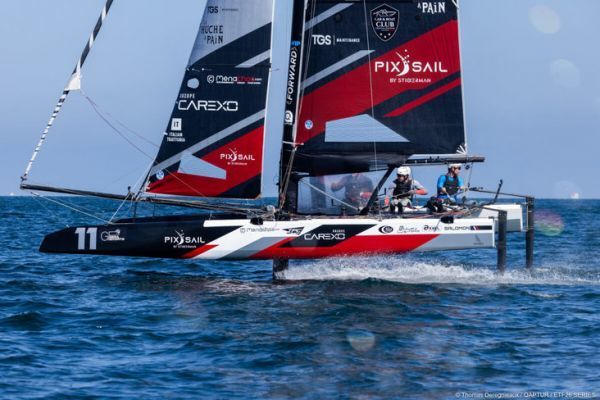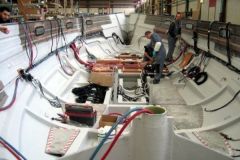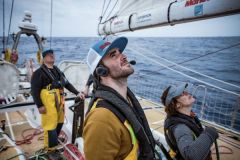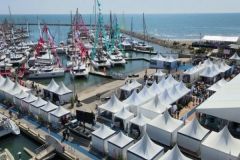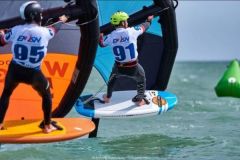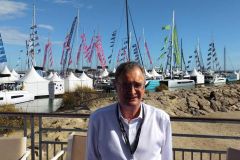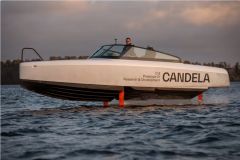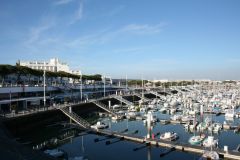The ETF26 has reached a decisive milestone with its "Full Foiling" version, the result of two years of research and development by a team of experts. This flying catamaran, now capable of flying even upwind, embodies the know-how of designers such as Guillaume Verdier, Loïc Goepfert and their technical partners. This collaborative project highlights the potential of foils to enhance the performance of racing catamarans.
New foils: Guillaume Verdier's signature
Under the direction of naval architect Guillaume Verdier, well known for his work on high-performance projects, the ETF26 "Full Foiling" has been fitted with new, longer foils. These foils offer increased lift, enabling the catamaran to take off at 14 knots, compared with 16 knots previously. Guillaume Verdier, accompanied by Loïc Goepfert, Raphaël Censier and Roland Allanic, supervised the tests and adjustments needed to fine-tune the new design. The creation of these foils also benefited from the skills of Laurent Thomas from MULTISAIL and the composite materials expertise of the AVEL Robotics team, led by Luc Talbourdet and Adrien Marchandise.
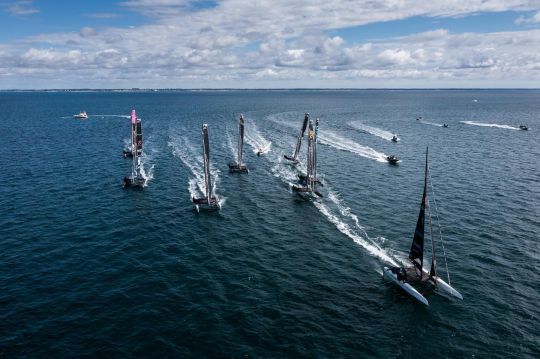
Upwind performance: A technical challenge met
The real feat of this new "Full Foiling" version lies in its ability to fly upwind in as little as 8 knots of wind. Guillaume Verdier, in association with the project's engineers and sailors, has developed a foil profile that provides sufficient lift to maintain flight even in light wind conditions. Tests, carried out at the end of 2023 with a foil prototype, have enabled an optimized design to be finalized in the spring of 2024. At the same time, the set of sails was adjusted with the support of Arnaud Jarlegan and Quentin Lesaout from North Sails, to maximize the boat's performance in all points of sail.
Fine-tuning: The work of a team of experts
To meet the requirements of the new foils, the boat required a number of adjustments. The rudder planes were widened, and a differential rake adjustment system was integrated to provide greater stability and maneuverability in flight. The mast trim, sail shape and chock angles were also rethought. Loïc Goepfert, a specialist in the development of these systems, worked closely with the technical team to refine these parameters. The contribution of Raphaël Censier and Roland Allanic was decisive in the hydrodynamic and aerodynamic adjustments.
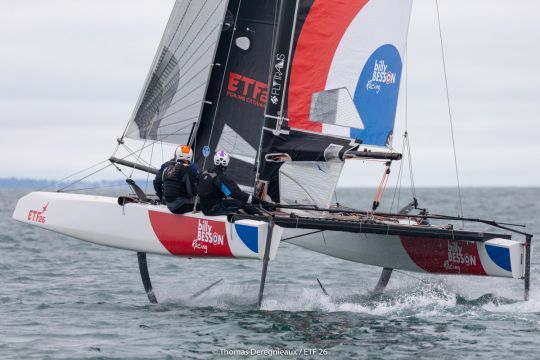
An ideal training ground: Benefits for top-level sailing
The ETF26 "Full Foiling" is becoming the training boat of choice for top-level sailors. Already adopted by America's Cup Youth and Women's teams, as well as by teams on the SailGP circuit, this flying catamaran offers an ideal transition between Olympic sailing, notably with Nacra 17, and professional competitions such as SailGP and the America's Cup. The project, supported by sailors such as MULTISAIL's Gurvan Bontemps and Arnaud Vasseur, demonstrates that the ETF26 is an essential tool for those seeking to perfect their foiling technique.
Promising prospects for the ETF26 class
The development of the "Full Foiling" version opens up exciting prospects for the ETF26 Class. With its enhanced performance, this catamaran is attracting more and more teams wishing to enter the ETF26 SERIES. These series are a springboard for young sailors and a means of preparing for professional competitions. The success of the project owes a great deal to the involvement of numerous players in the sailing world, whose combined efforts are contributing to the growth of hydrofoil racing.

